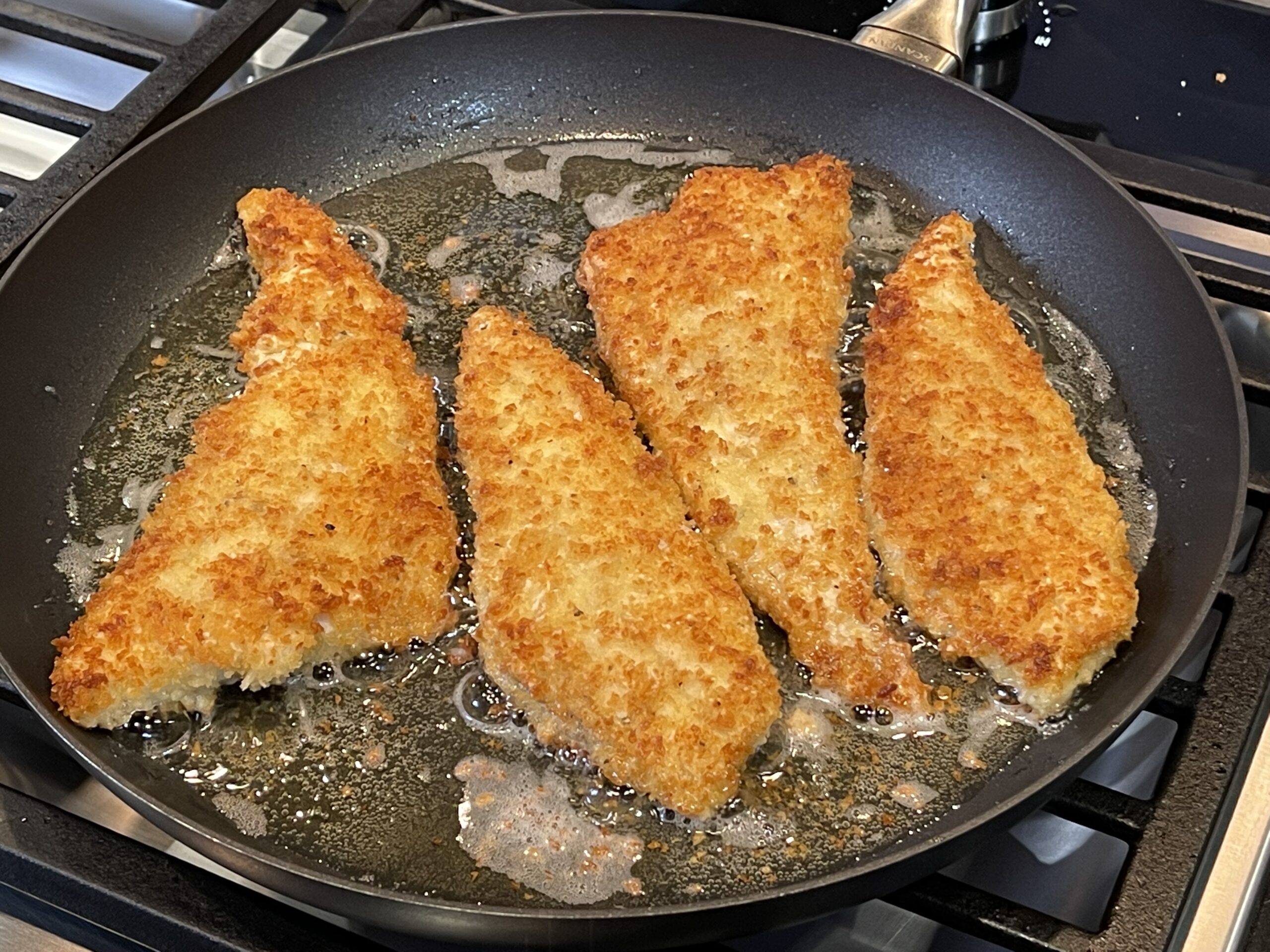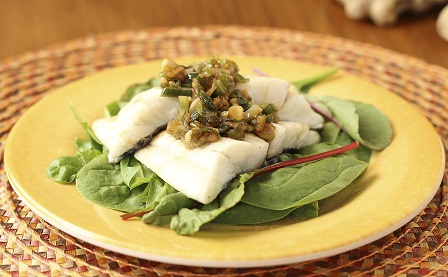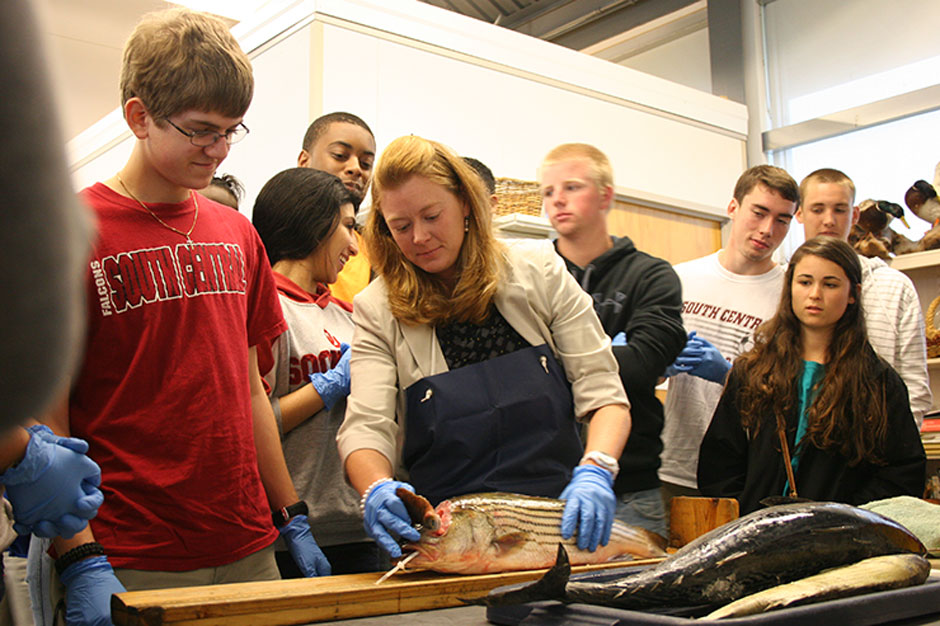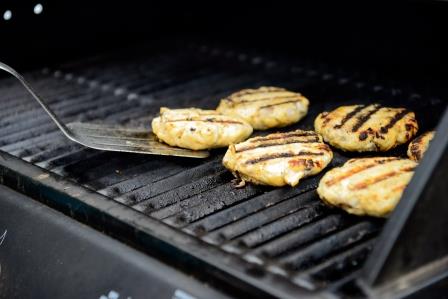MARINER’S MENU: Shining the Spotlight on Flounder

Caught by hook and line, gigging, and gill nets, flounder often is fished year-round. You will find them most available September through March. Flounder is a mild fish with a snowy-white flesh that lends itself well to many different cuisines.
Carolina baked flounder offers a complete meal in a single pan, layered with sliced potatoes and onions, and topped with bacon.
Deep-fried flounder turns out crispy and moist when properly cooked in oil at 375 F. After removing the fish from the pan, drain on paper towels to prevent it from becoming oily.
For a spicy dish that only requires 8 to 10 minutes of cooking, try steamed flounder with ginger sauce. Serve this sweet-hot entrée with a side of jasmine rice, or over a bed of salad greens, for a satisfying meal.
For more recipe ideas, pick up a copy of Mariner’s Menu: 30 Years of Fresh Seafood Ideas, a resource book by Joyce Taylor, available from UNC Press and local bookstores. To order directly from North Carolina Sea Grant, call 919-515-9101 or email sandra_harris@ncsu.edu.
More recipes can be found at the Mariner’s Menu blog at www.marinersmenu.org. For information on seafood seasonality and how to select fresh seafood, visit ncseagrant.ncsu.edu/seafood. — Vanda Lewis
CAROLINA BAKED FLOUNDER

Early on, Southerners established a tradition of fish and shellfish cookery. No doubt the early settlers took advantage of the indigenous seafood partly due to necessity. Today, however, most of us choose Southern recipes because of the eating pleasure and nutrition they offer.
- 1 3- to 4-pound flounder, dressed
- 4 cups potatoes, sliced crosswise in 1/8-inch slices
- 1 cup sliced onion
- 4 tablespoons margarine or butter, melted
- salt
- freshly ground black pepper
- 3 slices bacon
- 3 tablespoons flour
- 1 cup water
Score by making three diagonal slashes on top of the fish. Place potatoes and onion around fish. Brush fish with melted margarine. Sprinkle fish, potatoes and onion lightly with salt and pepper. Lay bacon over fish. Bake at 400 F for 15 minutes. Lower heat to 350 F. Continue to bake until potatoes are tender and fish flakes easily with a fork, about 30 to 45 minutes. About 15 minutes before fish is done, mix flour and water. Pour around fish. This will thicken. Serves 6 to 8.
STEAMED FLOUNDER WITH GINGER

If you don’t have a steamer, you can improvise. Use a vegetable steamer, roasting trivet or roasting pan with a rack. Always oil the rack or steamer except when steaming unshucked shellfish. Be sure to use a pot large enough for steam to circulate freely. And use a tight-fitting lid.
- 1 1/2 pounds flounder fillets
- 1/4 cup dry sherry
- 3 tablespoons vegetable oil
- 9 tablespoons thinly sliced green onion, including tops
- 1 1/2 tablespoons finely chopped fresh ginger
- 3 tablespoons soy sauce
- 1/4 teaspoon freshly ground white pepper
Cut fillets into serving-size pieces. Place on rack, drizzle with sherry and salt lightly. Place rack over boiling water. Cover and steam until done, about 8 to 10 minutes. Remove fish to warm platter. Serves 4 to 6. While fish is cooking, heat oil in small skillet. Add onion and ginger and stir-fry until tender, about 2 minutes. Add soy sauce and pepper. Mix well. Remove from heat. Pour over hot fish.
DEEP-FRIED FLOUNDER

The keys to good frying are proper temperature and fast cooking. The ideal temperature for frying fish is 375 F. With cooler oil, the food absorbs too much fat and the fish becomes soggy. If the oil is too hot, the fish may brown too quickly and burn. Also, most oils begin to smoke when they reach 400 F.
- 1 pound flounder fillets, cut into 2-inch pieces
- 1 egg, beaten
- 1 tablespoon milk
- 1/2 teaspoon salt
- 1/4 teaspoon freshly ground black pepper
- 1/2 cup cornmeal
- oil for frying
In small bowl, combine egg, milk, salt and pepper. Place cornmeal in shallow dish. Dip fish in egg mixture, then roll in cornmeal. Fry in deep fat at 375 F until golden brown, about 8 to 10 minutes. Drain on paper towels. Serves 3 to 4. (Smaller, thinner pieces near the tail will require about 2 minutes less cooking time.)
This article was published in the Autumn 2014 issue of Coastwatch.
For contact information and reprint requests, visit ncseagrant.ncsu.edu/coastwatch/contact/.
- Categories:


